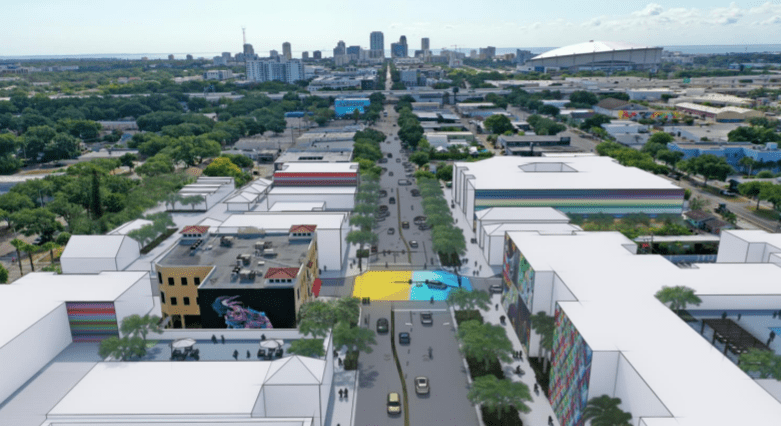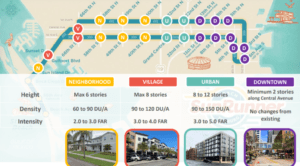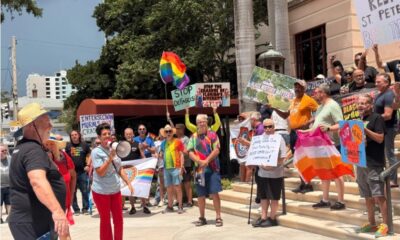Place
PSTA proposes new zoning for SunRunner TOD, for increased density

The Pinellas Suncoast Transit Authority envisions retail and affordable housing built around its future bus rapid transit stations by creating new zoning to maximize density.
PSTA is preparing to launch its $44 million SunRunner project this summer, which will be the first BRT in Tampa Bay and will connect through St. Petersburg, South Pasadena and St. Pete Beach on semi-dedicated lanes. It will have a total of 32 stations (16 stations on each side) along the 10.3-mile route.
BRT differs from traditional bus operations by incorporating on-level boarding and featuring a higher loop frequency, as there are a limited number of stations.
Like many BRT projects found across metros from Kansas City to D.C., developers have built mixed-use projects around the fixed stations, creating a sense of place.
“The way our codes and regulations act in places for TOD [transit-oriented development] are different than the contemporary zoning codes today,” engineer Eric Bosman of the Kimley-Horn firm said during Thursday’s Committee of the Whole meeting.
PSTA hired Kimley-Horn to conduct the SunRunner Rising Study, to evaluate the potential development that would be feasible for certain station locations that align with the city’s goals.
Bosman and Jared Schneider of Kimley-Horn said there are four types of classified areas along the SunRunner’s route for TOD: Neighborhood, village, urban and downtown.

A slide from Kimley-Horn’s presentation shows the height, density and intensity for each identified place category.
For “neighborhood” TOD, there would be a six-story maximum building height while buildings in the “village” would be capped at eight stories, and the building height in “urban” areas would be capped between eight to 12 stories. In “downtown,” the minimum height requirement would be two stories.
The recommendation would be to create a TOD zoning category or rezone suburban classifications, and apply a TOD overlay to the commercial category. The new zoning for the station areas would be applied to a quarter of a mile. However, Kimley-Horn representatives said that could be possibly be extended if local officials wished to evaluate the zoning encompassing a larger area.

A rendering showing TOD for an “urban” designated place.
Councilmember Ed Montanari asked if the recommended “urban” area density is enough. “Should we be thinking bigger on the edge of our downtown?” he asked.
Engineers said they’ve had a number of conversations to create a range.
“In transit areas, [the capped] dwelling units per acre is kind of a misguided measure,” Bosman said. “It’s where you want the housing because people can walk to and from [their units], help their transit cost and improve their quality of life.”
The consultants explained they want to have a balanced density to provide enough density, but not to overkill it and make it overwhelming.
The presenters compared how the zoning would significantly play a major role in the StPete2050 Vision Plan. The StPete2050 Vision Plan was created to help guide plans, programs and services throughout the city and in support of its sustainable, resilient and equitable growth over the next 30 years.
The city’s 2050plan projects the city should experience a residential demand for 31,000 to 47,000 residential units of new housing over the next 30 years. With new zoning, the SunRunner TOD could make up 30% to 40% of those residential units, which would include affordable housing. Likewise, the city’s plans show an increase of 3.6 to 5.9 million square feet of retail and office space over the next 30 years, which Kimley-Horn said the SunRunner TOD could meet 60% to 80% of that demand.
Kimley-Horn will be drafting a final document to bring to the city staff and committee with the goal of having the plan folded into the StPete2050 Vision Plan – so when the plan is adopted, the zoning and regulations for the SunRunner TOD projects will be a part of it.
The final documents will need to be adopted by PSTA and Forward Pinellas as well.
Kimley-Horn also suggested there would be wayfinding signs, bike and pedestrian connections from neighborhoods and re-grids of the street network to reduce large block sizes.








Mike Connelly
February 27, 2022at7:55 pm
So you can blow by at 65mph in a 30?
Elizabeth Faraone
February 27, 2022at10:40 am
In Florida for 22 years still no bus from Saint Petersburg to Tampa airport Why don’t they fix that.
Mike
February 27, 2022at10:21 am
Sun runner has ruined first ave north and sun runner has ruined first ave s.
bob griendling
February 27, 2022at6:43 am
Has it occurred to you that not everyone knows what Tod stands for?